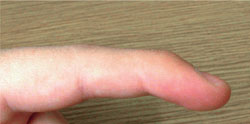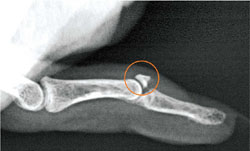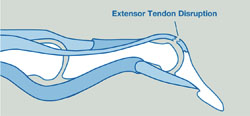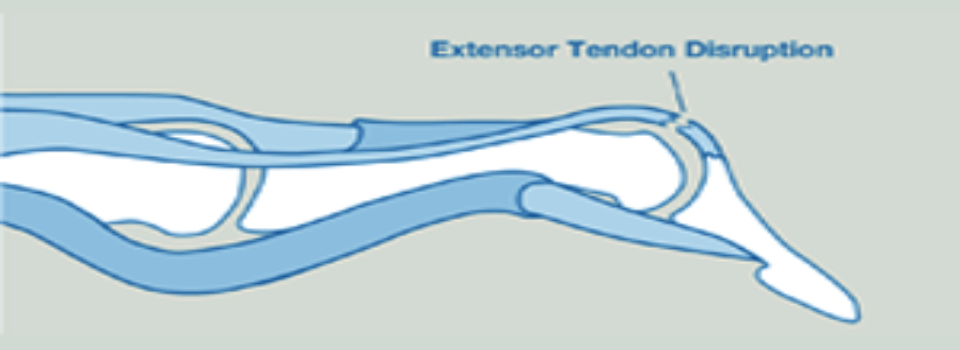 What is it?
What is it?
A mallet finger (or baseball finger) is a finger that becomes deformed when the straightening tendon of your finger gets damaged, which makes straightening the finger or thumb impossible.
What causes it?
This can happen when a ball or other object hits the tip of the finger, bending it and tearing the tendon. In extreme cases, the force may even cause a piece of the bone to pull away from the tendon.
 What are the symptoms?
What are the symptoms?
The most noticeable sign of a mallet finger is a fingertip that droops because it can’t straighten without being manually held straight. Pain, swelling and bruising of the finger sometimes accompanies the inability to straighten the finger. However, oftentimes, these other symptoms are not present. Occasional symptoms may also include blood collecting under the nail or even becoming detached at the base.
How do we diagnose it?
Diagnose is quite simple because of the finger’s dropping appearance. We may order an x-ray to check on the condition of the bones and joint alignment.
How is it treated?
Nonsurgical: Most mallet fingers do not require surgery. After the injury occurs, you should apply ice and elevate the hand right away. We recommend that you seek medical attention within a week, especially if there are problems with the nail, which could be the sign of a nail bed laceration or compound fracture. In addition, there are several types of splints or casts to treat mallet fingers. It’s important that the fingertip be kept straight until it heals. This may require wearing a splint full time for eight weeks. After that, the splint may be worn less frequently for the next month. Most patients eventually see the full return of function and appearance using this method. However, it’s not unusual if the finger can’t extend completely right away. In that case, your surgeon will direct you about how to use the splint and instruct you on exercises you can do to avoid stiffness. After the tendon has completely healed, you will also be shown exercises to do in order to regain movement in the fingertip.
 Please not that mallet finger injuries in children must be carefully evaluated to ensure that fingers do not become stunted or permanently deformed.
Please not that mallet finger injuries in children must be carefully evaluated to ensure that fingers do not become stunted or permanently deformed.
Surgical: Surgery may be considered if there are large bone fragments or if joints are improperly aligned. Pins, wires or small screws would be used to attach the bone fragment and realign the joint. We may also recommend surgery if nonsurgical treatment is unsuccessful in helping you regain finger extension. There are several surgical options, but your surgeon will recommend the best one for your particular case.


